#going out of bounds in the museum?? rules
Text
I really miss the six months of my master's where I was working in the labs under the Natural History Museum that you could enter via secret doors behind the dinosaur exhibits
#i felt SO COOL#i hated my masters mostly it was a really bad dissertation choice but working at the NHM was so cool#going out of bounds in the museum?? rules#also i could use my pass to get into basically any London gallery or museum for free#only used it once though#personal post
4 notes
·
View notes
Text
daunting - yan! blade
a/n - blade was the winner for my halloween poll but i know it's not halloween yet but it's better to post now for me. This drabble is loosely based on Toilet Bound Hanako Kun.

"Don't peer too close into the mirror."
"I've heard that everyone see a different person."
"Are you sure it's a ghost? It might be a demon instead."
The countless rumours that spread around since starting your first day at a museum. Cleaning toilets weren't part of your job description considering you were just a tour guide but the other cleaners or even your supervisors kept dropping out of the duties regarding HW31.
HW31, the first toilet of the museum, when a new fire alarm system was introduced along with new fire exits being made, HW31 was sectioned off from the museum and a newer unit replaced the original one.
HW31 was meant to be forgotten forever but something about the year budget being stretched too much made the set of toilets become the staff one.
A coworker broke a rule and didn't properly snuff out their lit cigarette in the restroom shortly before it became a blazing inferno of heat. The fire made the bathroom unusable and all the staff still hold a grudge against the fired employee considering HW31 have become the replacement.
No one wanted to enter the forgotten restroom knowing that dust and cobwebs lurks in every hidden corner, most of the dust landed onto the team that came along to install new water pipes and fix the electrics.
The work still wasn't done though, the toilets needed to be scrub and the mirror needed to be polish but no one was getting the job done because of him.
Him.
The ghost that lurks HW31.
The ghost or whatever his name was started to get on your nerves though, the non existent presence that created a dent in your work schedule.
The ghost apparently scare the shit out of the last visitors before being shut down, the incidents was decades ago so no one knew much but a retired elderly cleaner recalled how the duo of children came screaming out with tears running down their cheeks.
Unfortunately, her words got taken too seriously so you volunteered to become the experiment for this cleaning task, just a few hours and the whole thing will be over.
"You have to clean after the museum closes."
This is how you found yourself cleaning the floors with a mob during the late hours of evening, the whole team have gone home expect for the security guards.
If you could finish by midnight, you would be happy.
The foul weather was taking a toll on you though, hearing the pitter patter sounds of the rain reached your ears from the murky windows and not long afterwards, a crackling sound too.
A thunder storm and you needed to ride back home.
Great.
The predicament spur your hands to move the mop in long and wide strikes.
"Ghost, stop being lazy and give me a hand."
A demand spoken aloud in a rude tone.
Who cares, he wasn't real but you became alarmed when the lights afterwards started flickering.
"Bitch, say what?"
You spun around towards the masculine voice to find a tall man with chiseled features and highlighted strands of medium length hair.
Where did he come from? The insult completely ignored since he wasn't a familiar face and the door should be the only exit and entrance.
You was going to ask but the lights stopped flickering and seeing a closer look of his appearance just made things more strange.
The clothes look like from a different era, his skin was far too pale almost ghost like and his eyes were red.
A shade of red that made him looked too daunting.
Almost like he was the devil's advocate.
#yandere honkai star rail#blade#yandere blade#blade x reader#yandere blade x reader#honkai star rail x reader#honkai star rail#yandere honkai star rail x reader#hsr x reader#yandere hsr#yandere hsr x reader
128 notes
·
View notes
Text
Hermittober Day 5 - Sand
what came before:
day 1: frost - day 2: time - day 3: fortune - day 4: bound
-
Doc grumbled as he realised his compass was pointing at that cursed artifact location in Pearl's area. He wondered idly if Tango had fixed it or not yet. If he hadn't, well. This would be another wasted run.
He didn't exactly run up the stairs. Doc didn't really run per se in the dungeon. At times he did, when it was needed. But mostly he carefully picked his way through, aware of a need to not dawdle while also not caring enough to run through like a ravager in a museum gift shop. He was careful, methodical, his demeanor calm and focused in spite of any internal panic that might set in from time to time.
The berry bush hadn't regrown. Doc cursed it out too. The dungeon was feeling a little grumpy today, it seems. A lot of berries were not regrowing quick enough, or so Doc thought.
He sighed and threw the compass at the right location. It didn't go in. It sat on the sand, its needle spinning pointlessly around it. Hem ight have kicked it into the berry bush in annoyance.
"Goddamnit, Tango. Fix your stupid game, already!" Doc muttered as he picked it up, scratching himself on the berry bush as he did so. "Stupid bushes. Stupid compasses. Well. Might as well go find a ravager now, hmm? Nothing else to do at this point."
He didn't leave just yet though. He checked the compass one last time and threw it in a slightly different spot, and this time, the compass went in, and the dungeon boomed with ringing bells. Doc didn't have time to take in much else before the floor collapsed underneath his feet and he was falling through sand into a deep, dark pit that seemed to have no end.
-
He hit the ground with a hard thud, landing hard on his cybernetic arm. He heard a couple of awful crunches; he'd definitely damaged it somehow. And then, he felt sand falling on him, and he scrambled to his feet, trying to not get buried. He backed up until he was against some kind of solid wall. There was only a glimmer of light now, though his redstone eye could see just as well without it if he switched it to night vision mode.
"Man, this must be some troll right? Tango fixes my broken compass spot and turns it into a trap. How am I even meant to get out of here? I can't climb up that sand pile, it'll collapse under me! Hmm. I wonder if there's anything down here, though. Maybe Tango would be helpful here?"
Doc started looking around, but there wasn't much to find. Bare sandstone walls, an empty chest or two, some sticks, and a piece of coal. Well, at least he could make some torches. That was allowed, right? Doc didn't care about the rules at this point and set them around the room, lighting it up. It didn't help ease his sense of foreboding, but at least he could see better.
But now he could see some carvings on the back wall that hadn't shown up in his night vision as they'd needed the shadow cast from a torch to appear.
"Oh, do I have to do a puzzle, hey, Tango? Is that how I get out of here?"
There was no response, of course. Well, none save for what Doc could only describe as the dungeon laughing at him. A low, cackling kind of laugh that did sound a little like Tango, but also very much not. Doc scowled, but didn't let it get to him. Maybe if he just...
-
Doc didn't see the skulk veins closing in around him until it was too late. They had his legs, and pulled him down sharply, submerging him into the skulk until he was nothing. Doc didn't even have time to protest. But when he realised, he panicked.
-
Tango found him easily as he was writhing in the skulk, unable to escape. He didn't show his form, though. Instead, he travelled through the skulk to whisper in his ear as the hunger in his stomach roared.
"Don't you ever insult the dungeon, my dear Doc, or I will turn against you," Tango murmured.
Tango imagined Doc might have screamed at that point. He didn't know, not really, though. The skulk simply dissolved him and Doc respawned elsewhere, ready to die again to feed the hunger that was never satisfied.
#hermitcraft#fanfic#decked out 2#docm77#tangotek#skulk tango#the dungeon is alive#and it will kill you if it wants to#if you think i'm going to write about anything other than decked out 2 rn#then you are going to be woefully disappointed#hermittober#hermitfic
16 notes
·
View notes
Text
How I've Managed to Consistently Journal for the Past Three Years
As a kid and then teenager and then college student I very much wanted to keep a journal. I’m afraid of growing up and not having any record of my daily life or a way to access forgotten memories.
It’s scary when you ask an adult about a time in their life and they can’t recall any details.
Journaling is heralded as the life changing answer for mental health problems, productivity, and organization. You’re supposed to journal every day, track every place you go, everything you do, purchases, your thoughts, feelings, aspirations, blah blah blah blah.
And much of the advice and inspiration on keeping a journal seems to be productivity or aesthetic driven.
I’ve tried setting reminders to journal, (not helpful), carving out weekday slots to fill in (waste of paper), buying so many art supplies (I don’t regret this). Nothing worked and I always ended up not only feeling bad about myself, but terrified over the parts of my life that are already lost to time since I didn’t document them.
What I’ve learned is having rules around something as personal as journaling is dumb!
Your journal isn’t supposed to be weapon you wield against yourself. It’s ok to live your life and not stress over capturing it in some tangible form. Sure, you could get dementia and forget everyone you ever loved and everything you ever built, but it would be better to have no record of this life than a record you traded your peace for.
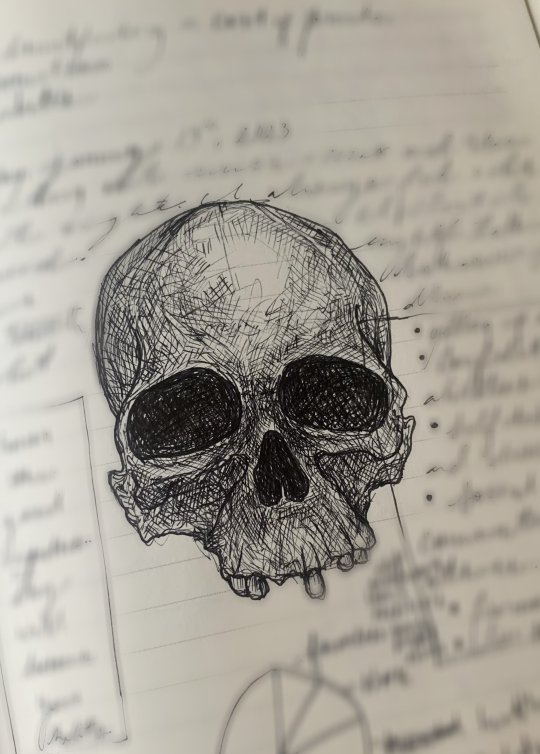
I’ve managed to consistently journal over the past few years because I stopped putting pressure on myself over it. Journaling has became something fun. It’s something I look forward to.
My best advice is to find what works for you and ignore everything else. But if you’re interested, here’s what’s currently working for me:
1. Using only notebooks I love.
I donated all the notebooks I received as gifts or bought for myself but later realized I didn’t like. I don’t use spiral bound, or ones with covers that are difficult to keep clean. The paper needs to be high quality and have lines or grids.
2. Using one journal for everything in my life.
I use the same notebook for my personal life, creative projects, and professional work. It’s just one thing I have to keep track of and everything I could possibly need on any given day is with me.
3. Using pages in chronological order.
I don’t section out anything. This wastes paper. Instead I’ll label the top of a page or use washi tape on the edge of a page to categorize it. And I always clearly date every entry.
4. Making a monthly spread.
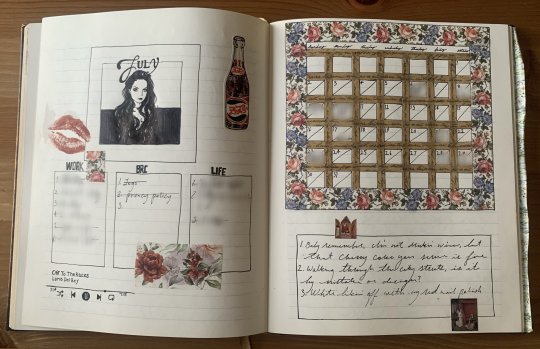
This can include a calendar, goals, trackers, a daily one line memory or event (that I don’t worry about entering every day). I make mine themed and adorable but it’s not necessary.
5. Allowing myself to write whatever the fuck I want.
No one should ever have access to this journal besides me. I let myself write as raw and real as I am.
I used to try sounding intelligent. Now I just put down all those idiotic thoughts and feelings. I don’t write with my future self reading it back in mind—who am I in this moment?
6. Doodling. A lot.
I doodle constantly in my journal. I sketch out project ideas. Having lines helps with accuracy and symmetry and it doesn’t feel like I’m wasting nice drawing paper therefore I’m more likely to sketch.

8. Pasting in trash.
Gluing in tickets, receipts, brochures, etc. is a wonderful way to document my life. They have preprinted dates, times, places, and events eliminating the need to write that all down.
I cut out images from museum guides and advertisements.
I don’t buy all that fake vintage crap or print things off—there’s plenty already out there that will otherwise go to waste.
Elmer’s glue sticks work great for this.
9. Taking it everywhere.
I never leave the house without my journal and a pen.
10. Never forcing anything.
I don’t write every day. I don’t keep track of my mood or hormone cycle to compare with my productivity. I don’t do anything I don’t feel like doing. If it’s not sticking it’s probably not working.
11. Brain dumping.
Sometimes there’s too much swirling around in my brain to write or create with clarity. I’ll take a page and write down everything that comes to mind—random ideas, messages I need to send, errands I need to run, stuff I want to do, stuff I’m worried about, literally everything that pops into my brain.
I free my brain from the burden of having to keep track of or process all of life’s shit. Brain dumps often include the same things as a previous brain dump. Patterns emerge and I gain insight on some of the behaviors or mind states I can increase awareness around.
Journaling consistently has not completely transformed my life—but it has improved it. Time feels a little slower. My days feel more meaningful even if all I did was sketch the moon making a weird face.
I don’t think I’ll be stopping any time soon.
#journal#journaling#creative process#art#drawing#creative#artwork#creative writing#productivity#organization#diary
5 notes
·
View notes
Note
I just wanna hear your opinion as a fellow amuazu shipper :) since amuazu is my comfort ship and I feel like Rei deserves a sunshine as Azusa in his life to balance out his hasty and dangerous lifestyle and heal his broken and hurt heart …and not forever alone or someone connected to his past etc.
I know ZTT ain’t canon but a setting in a parallel world yet the characteristics are still the same , the parallel world is just mentioned so it won’t overlap with the chronological order of the main main story etc. abut Gosho was the one behind every amuazu content in ztt and closely supervising it lol i mean Gosho‘s Original drafts and corrections at the end of each physical volume are the proof for it. And the biggest shocker was when Gosho wanted the final volume 6 of ZTT to be rearranged and packed it with almost only amuazu content, not to mention the final chapter Lmao literally screams Amuazu doujin lol. So we can be safe in saying Gosho is an amuazu shipper himself, I mean he was the one behind the shopping scene in m22 and even dubbed it as romcom. He brought amuazu to life. Anti’s say every amuazu content is non canon but then we got that Amuro vs. kid chapter in the main canon story where Azusa appeared for the whole case .. and the setting again as romcom .. where not only JK‘s and fan girls noticed Rei and Azusa but this time a well known reoccurring character as Sonoko (who’s always right with her intuitions) teased Azusa if her and Rei are on a date, to which Azusa tried to dismiss as usual to avoid fans getting angry, but Rei told her to not mind .. like what sir ?? So he’s fine if people think he’s dating Azusa ?? Even a main character as Ran supported that suspicion and our little Detective Conan also remarked if a PSB officer has so much free time, not only once. I mean if Poirot is closed then it’s the perfect chance for Rei to take care of BO stuff or PSB work no need to go out of his way and accompany Azusa to the museum, also isn’t it better to keep proper distance and avoid any unnecessary contact to a coworker (if Azusa is really just that to him) while infiltrating a place ? Rei is literally not following the rules lol and I think same as in ZTT when Kazami indicated the same upon noticing how Rei‘s doing unusual stuff with or for Azusa plus even getting along with her bro, if he isn’t doing that subconsciously cuz he enjoys the company of Azusa and her fam, he gets to live a brief moment of a normal life only with Azusa around him. Rei is definitely oblivious or purposely avoiding such thoughts since he always says is to fit into the infiltration place, but always does more than necessary lol. Antis always accuse us as delusional and apply real life logic on DC and amuazu saying a PSB officer won’t ever date a person from a place he infiltrated in .. yeah a PSB officer also won’t risk everything and take illegal measures to receive cooperation of a smart elementary schooler lol they forget everything we got for amuazu to base our assumptions was directly from the creator himself and he never denied the possibility of amuazu lol he even just feeds us with more stuff and is aware of the amuazu ship to mention them alongside the official police couples or during animal crossing game as a hint for the next chapter also during interviews ,SDB or content he himself releases. Not like for Rei‘s other ships where they just have headcanon’s and theories. I respect every ship and their shippers as long as they respect ours as well and mind their own business but these days shippers of ReiShi I don’t wanna generalize but just stating what I experienced, literally force their theories on amuazu Stan’s and stated that Rei is indirectly connected and fated with Shiho due to her mother, that Elena was his first love which was impossible from the get go thus he’s bound to end up with Shiho cuz they are very alike also share similar experiences and he’ll be the only to share stuff about Shiho’s mum to her. Okay and why is it necessary for her to live on ? Also since when does Gosho pair off people who are alike and share same experiences? Never !he always balances out his couples where one had it rough in life or is more closed off/tough and more intelligent and the other is the opposite bright , easy going, cheerful /goofy with no hardship. And the biggest point against them is the huge age gap.
sorry for the wait @angelcherrypie, my pc broke and I had to buy a new one (but I was also broke XD) and I was feeling kinda down.
I'll answer the ask by topics, okay?
let's go!
I agree with you, I think Rei needs someone to balance out his "dark" side. someone that can cheer him up when he is feeling down and I believe Gosho thinks the same. in Super Digest Book 90+ he answered an ask about the type of woman Amuro likes with that:
"I think Amuro-san likes intelligent and cheerful women."
2. ZTT, Gosho's stand on the ship and antis
yes ZTT is a spin-off, the events that happen there aren't canon to the main series but as you said Gosho's is directly involved with the manga. the moments amaz got there can't be ignored cause they might reflect their future in the main series.
Gosho seems to like (to tease) the ship, he himself made moments between them, in movie 22, the og manga, the spin-offs, and teases the ship when answering questions about romance in the series.
about antis, I don't care what they say. I've seen too many ship wars to care about them anymore. my approach is completely ignoring their existence and enjoying the things I like.
3. about Rei and Shiho's relationship (and this will be the last time I talk about them):
yes, he's indirectly connected with her because of her mom. he's also connected to Sato, Takagi, Komei, and Chihaya for similar reasons so...
"they are similar/have similar experiences" they can be a little similar but just like you said Gosho likes to balance out the couples.
"he's bound to end up with her because of his "impossible love"~(aka a kid's crush, yep first love but c'mon he was a little kid crushing on an adult married woman, it was a platonic and innocent love) with her mother" that's...kinda weird to me...
"he'll be the only one to talk to her about her mom" isn't Mary her auntie?? the sister of her mother?? and it always comes back to her mom?? damn.
about the age gap, the manga has some couples with an age gap (Yamato x Yui (same gap as amuazu, 6 years), Sonoko's parents I think, and Megure and his wife that I don't have an idea of how much it is, is it over or under 10 years? ), so I think if Gosho wanted them to be together he would do it regardless of the age gap (but he also could've made her age closer to Rei's if it was the plan, they have a gap of 11 years, he made her age closer to Shinichi's and even Higo's and that was a choice).
To end this matter, here's what I think their relationship will be like: the same one she has with Akai. both are indirectly connected to her because she's related to someone dear to them. just like Akai, he'll be one of her protectors.
I hope these answers satisfied you and my advice is to ignore antis, and just enjoy what you like.
19 notes
·
View notes
Photo





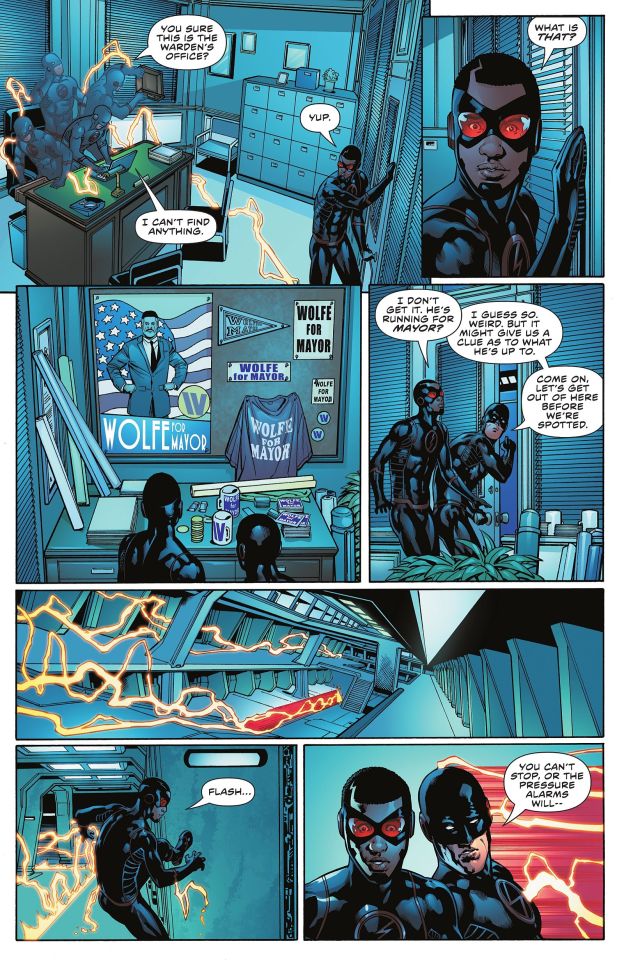
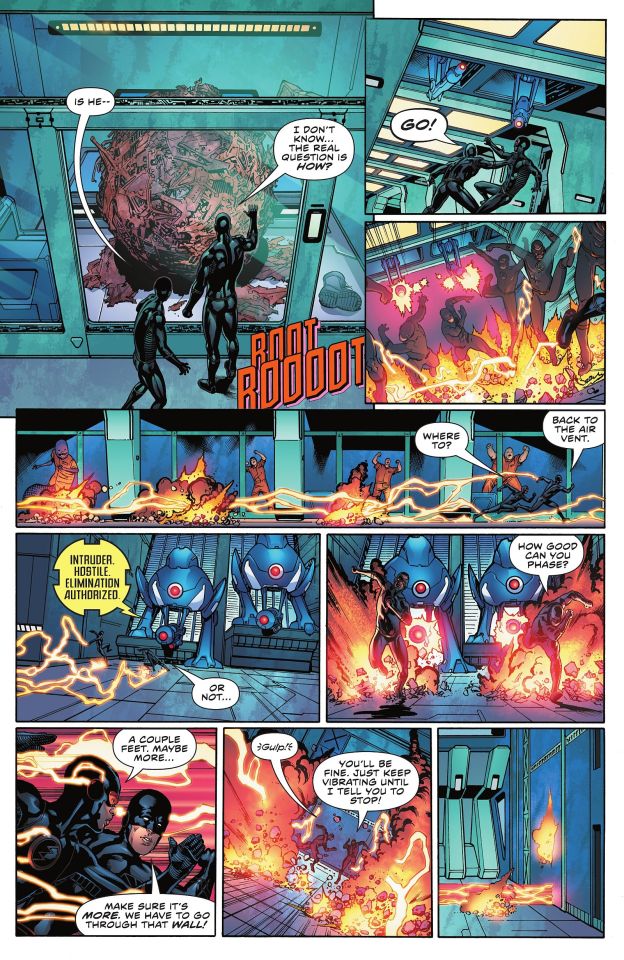

Spoilers for Flash #782!
You can see a few preview pages here.
We've got another deceptive cover, as Wally's trips into Iron Heights aren't nearly so dramatic as the cover makes it seem. But he does sneak in with Wallace, because they realize something strange is going on with Warden Wolfe. As you can see here, Wolfe is planning to run for mayor -- presumably he hasn't entered the race yet since the West cousins didn't know about it -- and he and Blacksmith had sent Girder out to do an unspecified task for them, which he didn't do. That's why Girder was worried about getting punished by her. And get punished he does, as she probably uses her metal manipulation powers to crunch him into a horrible ball.
But it seems like Wolfe's got other grand plans as well that we aren't privy to yet. And that's a little frustrating, because the Flash book is about to go through three months of Dark Crisis tie-ins! Jeremy Adams is pretty good at juggling multiple plots within an issue, so maybe this arc will continue to be developed amidst the Dark Crisis stuff, but I'm going to be annoyed if the book is completely hijacked by the crossover. Either way, there's still more to go and more to be discovered about what Wolfe's up to. He mentions talking to Len at the end, who I believe hasn't been seen since Year of the Villain (the Snarts seen in Eobard's grand revenge arc were from the past, you may recall). Hopefully he'll have ditched the Santa look by now.
I have to wonder if becoming the mayor is even what Wolfe truly wants, or if he's got something more in mind. It does stretch the bounds of credulity that he's already got his job back at Iron Heights and even thinks he can be elected after his public disgrace not too long ago...but I guess this is Central City/Keystone we're talking about, and they've got a history of questionable decisions (see also: the working weapons and tech in the Flash Museum, and then there’s this). It isn't a surprise that he's running on a campaign of law and order and also not a surprise that he's up to no good, both of which are very on-brand for Wolfe. His law-breaking has always been in the name of law and order, though; he was cruel to perceived criminals and inflexible towards reformed criminals because he believed so strongly in the rules and punishing those who broke them. So hopefully whatever he's up to now aligns with that and isn't just some garden variety corruption or anything, because that'd be a disappointment.
I was hoping to see some more Rogues in the story, because the solicitation states that "some of the Rogues are plotting" and it seems thus far that it's just Blacksmith in league with Wolfe and pushing Girder to do their bidding. But maybe Len's in on it too and hopefully we don't have to wait four months to find out. Or perhaps he'll be treated like a pawn as well, and this is all just Blacksmith's and Wolfe's thing. It'll be interesting if she stabs the boss in the back when it's convenient to her, or if she just wants her freedom and anything else he may have promised her and doesn't care what he does. There's also the distinct possibility he may betray her instead by not holding up his end of the bargain, since he's never treated criminals well or as people...Hunter Zolomon aside.
It was a pretty good issue with fun dialogue, especially between Wally and Wallace, and I enjoyed it. A bit miffed about the imminent crossover, but that isn't this issue's fault or the writer's fault. With any luck Adams will be able to continue this plot in the background of the Dark Crisis stuff, though that's not something we can necessarily count on. Hoping for the best!
8 notes
·
View notes
Text
Pedestrian Safety Concerns In Vietnam
This is one of the unwritten rules on the road in Vietnam. Hurrying motorbikes whiz by everything, there is no lane too congested, no road too small for these the men. Then, wake up for your cooking field!
This is a nice means of spending the day with spouse and children. The theatre tells of Vietnamese history and legends using wooden figures representing many people and the ever-present dragons. The story is told through music and the puppets party.
View More: topthaibinhaz.com - Top Thai Binh AZ
Reviewed by Team Leader in Top Thai Binh AZ: Trương Tuấn Anh - Truong Tuan Anh
The village of Dong Hoi is a pleasant fishing township. The Nhat Le River snakes along with the town on the sea. It isn't theonly serpent in state. At sunset locals sit by either the river or the sea and try a glass of snake wine - find snake blood and vodka - which locals claim is fantastic for your health. They drink it with banh loc a local cake along with glutinous rice paper and filled with cassave. Looking very particularly a translucent revioli, it makes a great accompaniment to your wine.
By car or coach - Is the common transportation for tourists once they travel in Vietnam. If you're to rent a car or coach included a motorist to travel around Vietnam. Almost tour operators and travel agencies in Vietnam offer this kind of of web site.

View More: topthaibinhaz.com - Top Thai Binh AZ
Reviewed by Team Leader in Top Thai Binh AZ: Trương Tuấn Anh - Truong Tuan Anh
When Applied laid far from work in Telecommunications. I considered teaching overseas. Since i have am a local English lecturer. The answer seemed obvious. Teach English.
My own experience is simply in the south, and then it may alter in the north, but what I have experienced would actually end up being opposite. Despite that I first came to Vietnam being a tourist in 1996, I never heard or felt anything but tremendous love for America and The population.
If you're ever in doubt you can invariably use the tactic employed men within an unnamed place in the world where ladies and children are property. Choose a woman and a couple of kids start across the trail and have as a screening device to get approaching in order to stop.
If you found the solemnity your market mausoleum too stifling, the particular museum can take some on the feeling separated. Here, you will get to see photos and old letters during period Thai Binh City of Ho Chi Minh. Just don't mind among the gruesome pictures of weight problems though.
Hongkong- Hongkong in particular is one of the top Asian destinations you can click to. Traveling in this particular country isn't cheap but you'll get their money's worth and your dollar is bound to go miles away. Tin Top Thái Bình AZ 24h You can check-in at Le Meridian hotel the can get harbor view rooms at $200 per night.

The next several days, traveling from state to state, town to town, brother to sister to brother you receive is and in order to copy the individual data of nine innocent family members had its challenges. But that is a story unto by themself.I'll spare you most of the details. Upon my return, the protocol required me discover all within the data virtually any correspondence from - let's call him "The Brother" that referenced his struggles with then. we're calling it Coffee. I was then to create the references I found, and send a copy both to the judge and also to opposing counsel for privilege and relevance review. Debby and her firm have not been to get a look in the data until anything either private or irrelevant were found to be picked out, and just remainder produced.
Don't have the name of the nation scare customers. It has been more than three since the Vietnam War has through. Now, the country is rapidly growing and you can eat fine food to add $10 a day. There are plenty of activities like coming to the busy and bustling southern capital of Ho Chi Minh Capital. There are lots of historical sites and museums that you can travel to and delight in.
There can be a museum tour of the Ho Chi Minh Museum, which is pretty popular for locals and tourists, considering that it displays concerning Ho Chi Minh as well as the city of Hue by yourself.
youtube
If you are organizing a trip to Vietnam in the near future, you are likely anxious to discover what to bring, and approaches to deal with money when you come. Fortunately, you can solve the money issue before you get there by using your ability to send money to Vietnam ahead of time on a prepaid debit card. Read additional info on this route, as well as basics about Vietnam, before you run.
How are we able to finish strong in 2009 and every single year? We have become fit physically, mentally and emotionally. I do believe there is no failure except in relinquishing and frequently give up because for the lack of fitness inside a of these areas. Since body, soul and spirit are intimately intertwined and performance as one, the insufficient fitness of one area can paralyze and hinder us from ever fulfilling our maximum potential in serving God's purposes.
Ho Chi Minh Thai Binh City in south Vietnam depends on the Saigon River north of the Mekong River delta. The previous French colonial city, where you will find over 5 million, is really a bustling modern metropolis where travellers in the historic sites and architecture and marvel at the intricacies of local Vietnamese handicraft.
It was my wife who explained about the Slanted Door after discovering the restaurant from her Vietnamese excellent. Tin Top Thái Bình AZ 247 I would have liked to have known common for the Slanted Door's impressive name, but has been nothing on its how does a person tell me the root of it. The restaurant is centered at Ferry Building 1, near the Bay Bridge, and has very good views among the Bay Brg. There is a bar to the left among the entrance.
This is often a Basic Rule of the Road for pedestrians in Vietnam. Once you are the dedication to cross ANY street, road or highway DO NOT STEP BACK if observe a motorbike or bicycle approaching one. This is one of the unwritten rules among the road in Vietnam. Motorbike and bicycle riders negotiate pedestrian "obstacles" by passing behind all involved.
Don't allow the name of the united states scare customers. It has been more than 20 years since the Vietnam War has broken. Now, the country is rapidly growing and you can eat fine food for only $10 in 24 hours. There are plenty of matters to attend to like good idea busy and bustling southern capital of Ho Chi Minh Metropolitan. There are lots of historical sites and museums that you can visit and participate in.
It's a person to eat like a Saigonese. Therefore it doesn't get any better and authentic when compared with Pho noodle soup right in Ho Chi Minh City. After gorging your bowl, inform us about the device. Many cannot stop at one.
Granted, there are conflicts with the Vietnamese government and some religious leaders who get involved in nation-wide politics. I don't know the details have proven to be conflicts but I'd venture to say they involve only a tiny minority of religious we. In the past, certainly there's been severe religious persecution in Vietnam, but important things have changed quite a bit. The official government line is that religion is free and open to all, there isn't anything haven't seen anything some other.
Learn about cultures within practices on the inside countries you're going to visit. See how to carry out activities that's not offending to the culture. Find out how to behave, address people as well as say things accordingly.
View More: topthaibinhaz.com - Top Thai Binh AZ
Reviewed by Team Leader in Top Thai Binh AZ: Trương Tuấn Anh - Truong Tuan Anh
Written By Author in topthaibinhaz.com: Phạm Tiến Duy - Pham Tien Duy
Written By Author in topthaibinhaz.com: Đặng Lê Nguyên Vũ - Dang Le Nguyen Vu Top Thai Binh AZ 24h
1 note
·
View note
Text

✧˚ · . ❝ ECHOES OF TIME SENTENCE STARTERS PT 1 ❞ ✧ ೃ༄

✧˚ · . ❝But isn't it funny you having the SAME dream, like, every night?❞
✧˚ · . ❝You sleep in EVERY morning. Is that why you grew up so fast?❞
✧˚ · . ❝I'll have you know I stayed up all night preparing my speech!❞
✧˚ · . ❝If ye wish to pursue the magic arts, I'd be more than happy to take ye on as a student.❞
✧˚ · . ❝Whatever I say goes. Agreed?❞
✧˚ · . ❝Around here, I'm the boss character!❞
✧˚ · . ❝From here on out, ye're responsibke for yer own decisions and behavior.❞
✧˚ · . ❝Act with honor, and never have any regrets.❞
✧˚ · . ❝Looking for someone? I'm right here.❞
✧˚ · . ❝Well kid, you made it through the test.❞
✧˚ · . ❝What did you expect? Fireworks and dancing bears? I do have something for you, though.❞
✧˚ · . ❝You can't just play all the time like you used to do.❞
✧˚ · . ❝We can never leave this village.❞
✧˚ · . ❝It is the LAW, and we must obey it.❞
✧˚ · . ❝Who made that up? Who went and decided something like that?❞
✧˚ · . ❝You're saying that you're all willing to watch ___ die just because of some stupid RULE!?❞
✧˚ · . ❝I'm so sorry about earlier. I just kind of lost it.❞
✧˚ · . ❝I gues monster huntin is over my head..❞
✧˚ · . ❝I'd love to go with you, but I have such a terrible sense of direction, I'd never find the way.❞
✧˚ · . ❝The truth is, I only stumbled onto this village because I got completely lost in the woods.❞
✧˚ · . ❝But I'm the only one who can go into the outside world.❞
✧˚ · . ❝Ye're not bound by the Law of the villwge like we are.❞
✧˚ · . ❝I believe you can do anything you put your mind to!❞
✧˚ · . ❝This place is the main watering hole for treasure hunters.❞
✧˚ · . ❝You've got a hankering for gold, too, right, kid?❞
✧˚ · . ❝Well, you're going to fit in just fine here. This town is full of dreamers!❞
✧˚ · . ❝Oh, pipe down, scroll-head.❞
✧˚ · . ❝Poppycock! If you cared about learning, you would donate your findings to the museum.❞
✧˚ · . ❝Hey, I gotta eat like everyone else.❞
✧˚ · . ❝Dark humor doesn't suit you.❞
✧˚ · . ❝You must REALLY like ruins if you've come all the way out here!❞
✧˚ · . ❝You know what happens to naughty children, don't you? The wicked witch of the forest comes and takes them away!❞
✧˚ · . ❝There aren't any witches in the forst.❞
✧˚ · . ❝Y-you're just trying to scare me. But I don't believe in witches!❞
✧˚ · . ❝I used to think the same. That is, until I went to the forest and saw the witch with my very own eyes!❞
✧˚ · . ❝Oh, so it's an OLD story, is it?❞
✧˚ · . ❝Well, I guess we're safe now, right?❞
✧˚ · . ❝People have been telling stories about a young girl wandering that forest for as long as I can remember.❞
✧˚ · . ❝Anyway, the stories have been passed from parent to child down through the years.❞
✧˚ · . ❝Well, I don't know who you are, but thank you.❞
✧˚ · . ❝I don't mind admitting you managed to scare me a little, too.❞
✧˚ · . ❝Well, well. I suppose the lesson here is not to open maps in windy places.❞
1 note
·
View note
Photo










National Maritime Day
Learn about the contributions of maritime workers such as transporters, and the regulations, safety rules, and security that goes into those crucial jobs.
Some people might have begun to notice a theme about May and its holidays–and that is that many of them are centered on getting back out and into the world. With the warming sun and halting rains, should anyone be the least bit surprised?
Even so, while National Maritime Day is not necessarily about the ocean at large, it is more about those men and women who spend their lives working on and around it. This day specifically focuses on the safety, security, and all the little elements that make up the lives of those on the sea, as well as a little bit of remembrance for how much people have to thank them for.
History of National Maritime Day
A great way to start with this day is by understanding exactly what maritime is. To begin with, maritime transport and work has been important since the human race first put something that floats in the water and decided to use it to get somewhere or do something.
National Maritime Day commemorates the sea, the people of the sea, and the incredible effect it has had on the lives and well-being of humankind. Just to start with the most basic point about it, sea trade has been the largest carrier of cargo in the history of the world. In fact, even the land-bound parts of the Silk Road didn’t see as much cargo and trade-goods moving along it as the oceans and seas have.
Of course, when it comes to the sea, the wind is an ever-present companion, the water buoyant and the siren-call of days at sea are strong in everyone nearby. But the one thing that may be a bit of a weakness for water-transport is the fact that items need to be delivered in a timely manner. While the system is and always has been fairly reliable, it certainly is not fast, at least not by today’s modern standards.
So for those who know someone who has worked in the sea trade or still does, National Maritime Day is the perfect day to take a moment to thank them for all they have done, and let them tell stories about their time on the salty black seas.
National Maritime Day Timeline
1300 BC Seafaring boats are used
The oldest discovered hulled boat that is for seafaring dates back to the Late Bronze Age. Evidence has been in a shipwreck off the coast of Turkey.
200 BC Maritime Silk Road begins
Before trade on the open seas was common, the Maritime Silk Road used many back routes and channels to make trade possible between Asia, Africa and Europe.
1492 Christopher Columbus’ First Voyage
This maritime trip into the new world is the first crossing of the Atlantic that does not use Arctic routes.
1912 The Titanic sinks
This most infamous of luxury cruise ships sinks on her maiden voyage between Southampton, England and New York City, USA.
1955 USS Nautilus is launched
The world’s first nuclear powered sailing vessel, named after the fictional submarine in Jules Verne’s Twenty Thousand Leagues Under the Sea.
How to Celebrate National Maritime Day
Make a Visit to the Coast
One perfect way to celebrate and honor this day is to get out to the oceans or seas by gaining access through the bays and the ports. Take a look at the ships coming and going, watch the boats going through the harbor, and perhaps even get up close to take a tour of one, if possible!
Take the time to go out and marvel at the ships and the huge dinosaur like cranes that hulk over the docks transporting cargo containers from shore to ship and ship to shore as they help make the world’s economy turn.
Check Out a Maritime Museum
While visiting a harbor or port, check to see if there is a Maritime museum nearby that can be easily accessed. These museums can offer a wealth of information that allows for learning about the sea and maritime issues. See what has been wrought and how things have changed over the years.
Learn about the regulations that people and boats have to follow and how maritime safety has been a constant and evolving concern–and still remains one of the most dangerous jobs in the world.
Some of the world’s most popular Maritime museums include:
National Maritime Museum, London, United Kingdom. Also called the Greenwich Maritime Museum, this one has been open since the 1930s.
Sydney Maritime Museum, Sydney, Australia. This fairly modern museum has been working for more than 20 years.
San Diego Maritime Museum, California, USA. In addition to visiting, people can participate in recreational and educational courses throughout the year.
Kobe Maritime Museum, Kobe, Japan. Built on one of Japan’s most important ports, this museum integrates Japanese maritime history with the influence of modern technology.
Read Some Books About Sea Life
National Maritime Day is the perfect time to get started on learning more about the lives of sailors and people of the sea. Traditionally, in the past the people living on the sea were mostly men, although some ships did allow women on board (or, in some cases, they snuck on board dressed as boys).
Try reading some of these fictional stories of the men (and a few women) who have had sea-faring adventures:
Moby Dick by Herman Melville. This classic piece of fiction was published in London in 1851 and hails the famous first line “Call me Ishmael”, one of the most recognizable lines in classic Western literature.
Seafaring Women: Adventures of Pirate Queens, Female Stowaways, and Sailors’ Wives by David Cordingly. Chronicling the various numbers of women who went to sea, this non-fiction historical narrative is surprising and delightful.
The Old Man and The Sea by Ernest Hemingway. Telling the battle of a Cuban fisherman against a marlin, this fictional short story was published in the US in 1952 and is well loved as it echoes the struggles of the human condition.
Shōgun by James Clavell. The first of novels in this series, Shōgun is based on actual events encountered by and English Sailor whose ship was blown ashore in Japan around 1600, giving a unique Western perspective on life in the Orient at the time.
National Maritime Day isn’t a day for being inside, it’s a day for going out and exploring this important part of the world’s past, present, and future. National Maritime Day – To The Docks!
National Maritime Day FAQs
What does maritime mean?
Many people don’t realize that maritime is just another word for something that has to do with the sea.
What is maritime law?
Also known as Admiralty law, Maritime law governs private business and other nautical issues on open waters.
What is a Maritime museum?
Also called a nautical museum, Maritime museums feature displays related to ships and travel on seas or oceans. They are often located in coastal towns and cities.
What are Maritime flags?
Used to communicate with other boats on the water, international maritime flags are made of certain shapes and colors to represent colors and numbers.
What is the International Maritime Organization?
The IMO is a special agency of the United Nations (UN) that is responsible for safety and security, as well as pollution prevention, of shipping all over the world.
Source
#Morro Bay#Morro Rock#sailing boat#ship#original photography#landmark#seascape#landscape#Pacific Ocean#Carquinez Strait#Grizzly Bay#USA#US Coast Guard#Savannah River#GTS Celebrity Constellation#Norway#Atlantic Ocean#technology#engineering#National Maritime Day#summer 2022#2016#2006#NationalMaritimeDay#22 May#California#Georgia#Savannah#tourist attraction
1 note
·
View note
Text
ART1203 - Video Notes (4/11/2023)
[Video 1/4]
Video one of four called “How artists transform everyday objects” it goes into detail and explores the many ways three artists have transformed ordinary objects around them to create interesting works of art. The first artist introduced was a man named Marcel Duchamp who’s well known for his sculpture “Bicycle Wheel” which he created in 1913. The Bicycle Wheel is exactly what you’d imagine, it looks like a bicycle wheel on a stool because it’s a bicycle wheel on a stool and despite its simple nature has many interesting ideas associated with this work. It was one of many works by Duchamp which were called Readymade. Readymades are works of art created with manufactured objects. They are controversial due to disrupting centuries of thinking about the artist’s role as a skilled creator of original handmade works. Readymades challenged every definition of art such as “Art is handmade by the artist” and “Art is beautiful”. Duchamp considered Readymades to be eye candy, something to be looked at.
In 1955, Artist Robert Rauschenberg created Work 3 which is called Bed. In New York art was very serious and it was called Abstract Expressionism. It was brooding and personal.
[Video 2/4]
The video “HOW TO SEE “Readymades” with MoMA curator Ann Temkin” focuses on French Painter Marcel Duchamp and how his great ambition was a very bold one, such as it wasn’t how to be a better artist, it was how to redefine the question of what it means to be an artist. He said himself in an interview that his greatest contribution, among many others to the art of that century was his idea of the “readymade.” A readymade work of art is something that Marcel Duchamp came up with in their nineteen-teens and how it was the idea that he could just go to a store, choose an item, or maybe a couple of items, put them together, and set it up in his studio, and call it a work of art. This directly contradicts the notions that had gone on for centuries, with the idea of an artist. Often, the readymades had a title that was part of the work of art.
[Video 3/4]
In the video “Guadalupe Maravilla: A Spiritual Practice” Multidisciplinary artist and educator Guadalupe Maravilla explains how spirituality and sound is inextricably bound to his artistic practice. Guadalupe Maravilla, formerly known as Irvin Morazán, is a transdisciplinary visual artist, choreographer, and healer. At the age of eight, Maravilla was part of the first wave of unaccompanied, undocumented children to arrive at the United States border in the 1980s because of the Salvadoran Civil War. Maravilla’s first museum project was called “Portals” which opened on June 27th, 2019, at ICA Miami and features a group of powerful sculptures and headdresses that incorporate gongs used in vibrational therapy. These objects, activated through participatory performances, would turn the gallery into a therapeutic experience to cleanse unseen phobias and negative energies. Maravilla is currently an assistant professor at Virginia Commonwealth University, Richmond. He has exhibited his work and performed at the Metropolitan Museum of Art.
[Video 4/4]
In the video “Guadalupe Maravilla: Crossing Borders Through Art” Artist Guadalupe Maravilla explains he wanted to figure out how to pay someone and give them work despite being undocumented and so he decided to play a game with those he contacts called Three Pachuca which is a game he used to play as a child as he was crossing the Mexican border. It involves drawing lines and the only rule is that the lines cannot touch Maravilla would often play this game with other children to distract himself from the reality around him as he was crossing the border of Mexico into the United States of America. The purpose of the game is to form this bond between the undocumented and to create a complex labyrinth that is supposed to represent their journey of crossing the border and the confusion that went along with that journey, especially for a young child.
0 notes
Text
Burke and Hare: Murderers for Science | Victorian History
NOTE: This post contains content that may be disturbing to some readers. This includes the topic of murder and dissection of human corpses.
Before visiting Scotland and walking down walls upon walls covered with jars of human body parts, I thought I knew a decent amount about the murderers Burke and Hare, but apparently I missed out one very important detail; what happened to them after death.
To start to explain, you need to know that bodies in Victorian times meant money. Autopsies was not just a thing for science; oh no, it was more than that. Sometimes, a single body could draw in crowds of rich people that would look on in awe, while other times it was simply just an artist wanting to get anatomy perfect. For example, both Michelangelo and Divinci both studied dead bodies.
It was just not autopsies that drove the corpse-stealing trade, either. Sometimes the skeletons would find their ways into schools, or organs would be kept as collectors items.
The problem? While a body today might find it’s way into a college for science after being donated, back then that was not really something that happened. So, people simply didn’t ask where the bodies came from.
Sometimes graves were dug up (celebrities could get a very good price), but other times it was simpler to just…create a corpse.
Law did state that bodies could “only” come from prisons, suicides, foundlings, and orphans, but not everyone followed that. One inclusion to this rule breaking was Robert Knox. He was not a lovely man(his track record included advocating for racism through “science”) but he ended up being best known as the man who bought bodies of murdered victims.
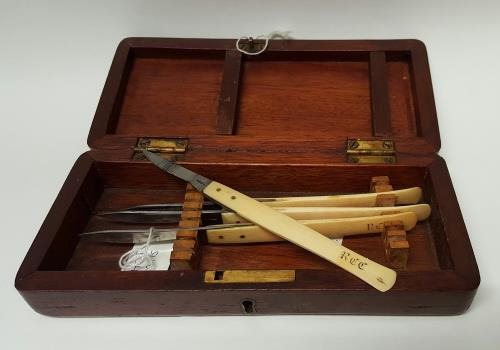
Introduce Burk and Hare in Edinburgh, Scotland during the 1800’s. Hare had several lodgers in his boarding house, and after one of them died, the two decided to sell the body to Knox. Why? Well, the dead man did owe rent, which justified the action in their eyes.
Knox agreed to take the body and paid them, and the two men were so pleased by the sum, they proceeded to kill another lodger who was sick. Again Knox took the body without question and paid them, and suddenly the two men had new ambitions.
Through murder, they began “creating” bodies to sell, and became quite good at it. They were, eventually, caught, and found guilty of murdering 15 people(though it is estimated to be much greater).
Hare somehow managed to be released and Knox escaped punishment (though his career was ruined), but Burk was publicly executed to a cheering crowd, and his body (in a strange twist of justice ) was donated to science.
The story above was the one I had heard before going to Scotland. The part that was left out was what gave a bit of a shock.
So now, back to me, wandering and looking with morbid curiosity at the displays in the Surgeons Hall Museum. You might see a human skull, historical medicine kits, patches of skin with tattoos, and more. If you have ever been curious about the dark side of history, this wonderful museum does not shy away from anything.
It was a surreal experience, but it was made even more so when I found myself looking at a death mask and a book bound with human skin.
Under the hands of anatomy students, his body became a treasure trove of souvenirs. His skin was used for books, his skeleton used for display( currently at the Anatomical Museum of the Edinburgh Medical School), and they made a death mask so you can see just what he looked like.
Those three things I mentioned above? They were from Burke. So, the man who used to sell bodies to science became a body for science himself.
If you are not faint of heart and find yourself in Edinburgh, the Surgeons Hall Museum is for sure worth a visit.
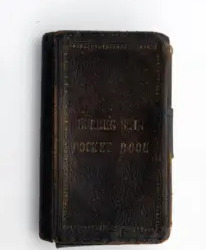
1 note
·
View note
Photo

Intellectual and material framework
The task to be accomplished was immense. It was nothing less than the foundation of permanent and organised society. Till this was done all was in danger. All knowledge might be lost, the arts might perish, the civil community might break up. Hitherto there had been no permanence, no union, no system. What was needed was to form the intellectual and material framework of a fixed nation. And this the Egyptian priesthood undertook. The spot was favourable to the attempt. In that great, rich plain, walled off on all sides by the desert or by the sea, it was possible to found a society at once industrial, peaceful, and settled. They needed judges to direct them, teachers to instruct them, men of science to help them, governors to rule them, preachers to admonish them, physicians to heal them, artists to train them, and priests to sacrifice for them. To meet these wants a special order of men spontaneously arose, by whose half-conscious efforts a complete system of society was gradually and slowly formed. In their hands was concentrated the whole intellectual product of ages; this they administered for the common good local ephesus tour guides.
Gradually by their care there arose a system of regular industry. To this end they divided out by their superior skill all the arts and trades of life. Each work was apportioned, each art had its subordinate arts. Then as a mode of perpetuating skill in crafts, to insure a sound apprentice¬ship of every labour, they caused or enabled each man’s work to become hereditary within certain broad Jimits, and thus created or sanctioned a definite series of castes. To give sanction to the whole, they consecrated each labour, and made each workman’s toil a part of his religious duty. Then they organised a scheme of general education. They C provided a system of teaching common to all, adapted to the work of each. They provided for the special education of the sacred class in the whole circle of existing knowledge ; they collected observations, they treasured up discoveries, and recorded events.
Established property
Next they organised a system of government. They established property, they divided out the land, they set up landmarks, they devised rules for its tenure, they introduced law, and magistrates, and governors; provinces were divided into districts, towns, and villages ; violence was put down, a strict police exercised, regular taxes imposed. Next they organised a system of morality; the social, the domestic, and the personal duties were minutely defined; practices relating to health, cleanliness, and temperance were enforced by religious obligations : every act of life, every moment*of existence, was made a part of sacred duty. Lastly, they organised national life by a vast system of common religious rites, having imposing ceremonies which awakened the imagination and kindled the emotions, bound up the whole community into an united people, and gave stability to their national existence, by the awful sense of a common and mysterious belief.
If we want to know what such a system of life was like, let us go into some museum of Egyptian antiquities, where we may see representations of their mode of existence carved upon their walls. There we may see nearly all the arts of life as we know them—weaving and spinning, working in pottery, glass-blowing, building, carving, and painting; ploughing, sowing, threshing, and gathering into barns; boating, irrigation, fishing, wine-pressing, dancing, singing, and playing — a vast community, in short, orderly, peaceful, and intelligent; capable of gigantic works and of refined arts, before which we are lost in wonder; a civilised community busy and orderly as a hive of bees, amongst whom every labour and function was arranged in perfect harmony and distinctness : all this may be seen upon monuments 5000 years old.
0 notes
Photo

Intellectual and material framework
The task to be accomplished was immense. It was nothing less than the foundation of permanent and organised society. Till this was done all was in danger. All knowledge might be lost, the arts might perish, the civil community might break up. Hitherto there had been no permanence, no union, no system. What was needed was to form the intellectual and material framework of a fixed nation. And this the Egyptian priesthood undertook. The spot was favourable to the attempt. In that great, rich plain, walled off on all sides by the desert or by the sea, it was possible to found a society at once industrial, peaceful, and settled. They needed judges to direct them, teachers to instruct them, men of science to help them, governors to rule them, preachers to admonish them, physicians to heal them, artists to train them, and priests to sacrifice for them. To meet these wants a special order of men spontaneously arose, by whose half-conscious efforts a complete system of society was gradually and slowly formed. In their hands was concentrated the whole intellectual product of ages; this they administered for the common good local ephesus tour guides.
Gradually by their care there arose a system of regular industry. To this end they divided out by their superior skill all the arts and trades of life. Each work was apportioned, each art had its subordinate arts. Then as a mode of perpetuating skill in crafts, to insure a sound apprentice¬ship of every labour, they caused or enabled each man’s work to become hereditary within certain broad Jimits, and thus created or sanctioned a definite series of castes. To give sanction to the whole, they consecrated each labour, and made each workman’s toil a part of his religious duty. Then they organised a scheme of general education. They C provided a system of teaching common to all, adapted to the work of each. They provided for the special education of the sacred class in the whole circle of existing knowledge ; they collected observations, they treasured up discoveries, and recorded events.
Established property
Next they organised a system of government. They established property, they divided out the land, they set up landmarks, they devised rules for its tenure, they introduced law, and magistrates, and governors; provinces were divided into districts, towns, and villages ; violence was put down, a strict police exercised, regular taxes imposed. Next they organised a system of morality; the social, the domestic, and the personal duties were minutely defined; practices relating to health, cleanliness, and temperance were enforced by religious obligations : every act of life, every moment*of existence, was made a part of sacred duty. Lastly, they organised national life by a vast system of common religious rites, having imposing ceremonies which awakened the imagination and kindled the emotions, bound up the whole community into an united people, and gave stability to their national existence, by the awful sense of a common and mysterious belief.
If we want to know what such a system of life was like, let us go into some museum of Egyptian antiquities, where we may see representations of their mode of existence carved upon their walls. There we may see nearly all the arts of life as we know them—weaving and spinning, working in pottery, glass-blowing, building, carving, and painting; ploughing, sowing, threshing, and gathering into barns; boating, irrigation, fishing, wine-pressing, dancing, singing, and playing — a vast community, in short, orderly, peaceful, and intelligent; capable of gigantic works and of refined arts, before which we are lost in wonder; a civilised community busy and orderly as a hive of bees, amongst whom every labour and function was arranged in perfect harmony and distinctness : all this may be seen upon monuments 5000 years old.
0 notes
Photo

Intellectual and material framework
The task to be accomplished was immense. It was nothing less than the foundation of permanent and organised society. Till this was done all was in danger. All knowledge might be lost, the arts might perish, the civil community might break up. Hitherto there had been no permanence, no union, no system. What was needed was to form the intellectual and material framework of a fixed nation. And this the Egyptian priesthood undertook. The spot was favourable to the attempt. In that great, rich plain, walled off on all sides by the desert or by the sea, it was possible to found a society at once industrial, peaceful, and settled. They needed judges to direct them, teachers to instruct them, men of science to help them, governors to rule them, preachers to admonish them, physicians to heal them, artists to train them, and priests to sacrifice for them. To meet these wants a special order of men spontaneously arose, by whose half-conscious efforts a complete system of society was gradually and slowly formed. In their hands was concentrated the whole intellectual product of ages; this they administered for the common good local ephesus tour guides.
Gradually by their care there arose a system of regular industry. To this end they divided out by their superior skill all the arts and trades of life. Each work was apportioned, each art had its subordinate arts. Then as a mode of perpetuating skill in crafts, to insure a sound apprentice¬ship of every labour, they caused or enabled each man’s work to become hereditary within certain broad Jimits, and thus created or sanctioned a definite series of castes. To give sanction to the whole, they consecrated each labour, and made each workman’s toil a part of his religious duty. Then they organised a scheme of general education. They C provided a system of teaching common to all, adapted to the work of each. They provided for the special education of the sacred class in the whole circle of existing knowledge ; they collected observations, they treasured up discoveries, and recorded events.
Established property
Next they organised a system of government. They established property, they divided out the land, they set up landmarks, they devised rules for its tenure, they introduced law, and magistrates, and governors; provinces were divided into districts, towns, and villages ; violence was put down, a strict police exercised, regular taxes imposed. Next they organised a system of morality; the social, the domestic, and the personal duties were minutely defined; practices relating to health, cleanliness, and temperance were enforced by religious obligations : every act of life, every moment*of existence, was made a part of sacred duty. Lastly, they organised national life by a vast system of common religious rites, having imposing ceremonies which awakened the imagination and kindled the emotions, bound up the whole community into an united people, and gave stability to their national existence, by the awful sense of a common and mysterious belief.
If we want to know what such a system of life was like, let us go into some museum of Egyptian antiquities, where we may see representations of their mode of existence carved upon their walls. There we may see nearly all the arts of life as we know them—weaving and spinning, working in pottery, glass-blowing, building, carving, and painting; ploughing, sowing, threshing, and gathering into barns; boating, irrigation, fishing, wine-pressing, dancing, singing, and playing — a vast community, in short, orderly, peaceful, and intelligent; capable of gigantic works and of refined arts, before which we are lost in wonder; a civilised community busy and orderly as a hive of bees, amongst whom every labour and function was arranged in perfect harmony and distinctness : all this may be seen upon monuments 5000 years old.
0 notes
Photo
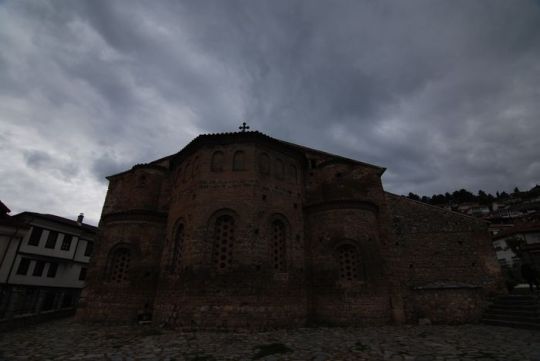
Intellectual and material framework
The task to be accomplished was immense. It was nothing less than the foundation of permanent and organised society. Till this was done all was in danger. All knowledge might be lost, the arts might perish, the civil community might break up. Hitherto there had been no permanence, no union, no system. What was needed was to form the intellectual and material framework of a fixed nation. And this the Egyptian priesthood undertook. The spot was favourable to the attempt. In that great, rich plain, walled off on all sides by the desert or by the sea, it was possible to found a society at once industrial, peaceful, and settled. They needed judges to direct them, teachers to instruct them, men of science to help them, governors to rule them, preachers to admonish them, physicians to heal them, artists to train them, and priests to sacrifice for them. To meet these wants a special order of men spontaneously arose, by whose half-conscious efforts a complete system of society was gradually and slowly formed. In their hands was concentrated the whole intellectual product of ages; this they administered for the common good local ephesus tour guides.
Gradually by their care there arose a system of regular industry. To this end they divided out by their superior skill all the arts and trades of life. Each work was apportioned, each art had its subordinate arts. Then as a mode of perpetuating skill in crafts, to insure a sound apprentice¬ship of every labour, they caused or enabled each man’s work to become hereditary within certain broad Jimits, and thus created or sanctioned a definite series of castes. To give sanction to the whole, they consecrated each labour, and made each workman’s toil a part of his religious duty. Then they organised a scheme of general education. They C provided a system of teaching common to all, adapted to the work of each. They provided for the special education of the sacred class in the whole circle of existing knowledge ; they collected observations, they treasured up discoveries, and recorded events.
Established property
Next they organised a system of government. They established property, they divided out the land, they set up landmarks, they devised rules for its tenure, they introduced law, and magistrates, and governors; provinces were divided into districts, towns, and villages ; violence was put down, a strict police exercised, regular taxes imposed. Next they organised a system of morality; the social, the domestic, and the personal duties were minutely defined; practices relating to health, cleanliness, and temperance were enforced by religious obligations : every act of life, every moment*of existence, was made a part of sacred duty. Lastly, they organised national life by a vast system of common religious rites, having imposing ceremonies which awakened the imagination and kindled the emotions, bound up the whole community into an united people, and gave stability to their national existence, by the awful sense of a common and mysterious belief.
If we want to know what such a system of life was like, let us go into some museum of Egyptian antiquities, where we may see representations of their mode of existence carved upon their walls. There we may see nearly all the arts of life as we know them—weaving and spinning, working in pottery, glass-blowing, building, carving, and painting; ploughing, sowing, threshing, and gathering into barns; boating, irrigation, fishing, wine-pressing, dancing, singing, and playing — a vast community, in short, orderly, peaceful, and intelligent; capable of gigantic works and of refined arts, before which we are lost in wonder; a civilised community busy and orderly as a hive of bees, amongst whom every labour and function was arranged in perfect harmony and distinctness : all this may be seen upon monuments 5000 years old.
0 notes
Photo
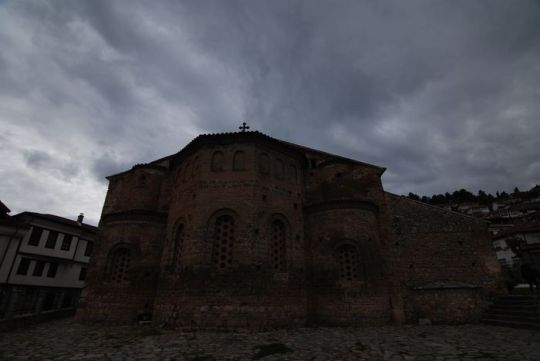
Intellectual and material framework
The task to be accomplished was immense. It was nothing less than the foundation of permanent and organised society. Till this was done all was in danger. All knowledge might be lost, the arts might perish, the civil community might break up. Hitherto there had been no permanence, no union, no system. What was needed was to form the intellectual and material framework of a fixed nation. And this the Egyptian priesthood undertook. The spot was favourable to the attempt. In that great, rich plain, walled off on all sides by the desert or by the sea, it was possible to found a society at once industrial, peaceful, and settled. They needed judges to direct them, teachers to instruct them, men of science to help them, governors to rule them, preachers to admonish them, physicians to heal them, artists to train them, and priests to sacrifice for them. To meet these wants a special order of men spontaneously arose, by whose half-conscious efforts a complete system of society was gradually and slowly formed. In their hands was concentrated the whole intellectual product of ages; this they administered for the common good local ephesus tour guides.
Gradually by their care there arose a system of regular industry. To this end they divided out by their superior skill all the arts and trades of life. Each work was apportioned, each art had its subordinate arts. Then as a mode of perpetuating skill in crafts, to insure a sound apprentice¬ship of every labour, they caused or enabled each man’s work to become hereditary within certain broad Jimits, and thus created or sanctioned a definite series of castes. To give sanction to the whole, they consecrated each labour, and made each workman’s toil a part of his religious duty. Then they organised a scheme of general education. They C provided a system of teaching common to all, adapted to the work of each. They provided for the special education of the sacred class in the whole circle of existing knowledge ; they collected observations, they treasured up discoveries, and recorded events.
Established property
Next they organised a system of government. They established property, they divided out the land, they set up landmarks, they devised rules for its tenure, they introduced law, and magistrates, and governors; provinces were divided into districts, towns, and villages ; violence was put down, a strict police exercised, regular taxes imposed. Next they organised a system of morality; the social, the domestic, and the personal duties were minutely defined; practices relating to health, cleanliness, and temperance were enforced by religious obligations : every act of life, every moment*of existence, was made a part of sacred duty. Lastly, they organised national life by a vast system of common religious rites, having imposing ceremonies which awakened the imagination and kindled the emotions, bound up the whole community into an united people, and gave stability to their national existence, by the awful sense of a common and mysterious belief.
If we want to know what such a system of life was like, let us go into some museum of Egyptian antiquities, where we may see representations of their mode of existence carved upon their walls. There we may see nearly all the arts of life as we know them—weaving and spinning, working in pottery, glass-blowing, building, carving, and painting; ploughing, sowing, threshing, and gathering into barns; boating, irrigation, fishing, wine-pressing, dancing, singing, and playing — a vast community, in short, orderly, peaceful, and intelligent; capable of gigantic works and of refined arts, before which we are lost in wonder; a civilised community busy and orderly as a hive of bees, amongst whom every labour and function was arranged in perfect harmony and distinctness : all this may be seen upon monuments 5000 years old.
0 notes